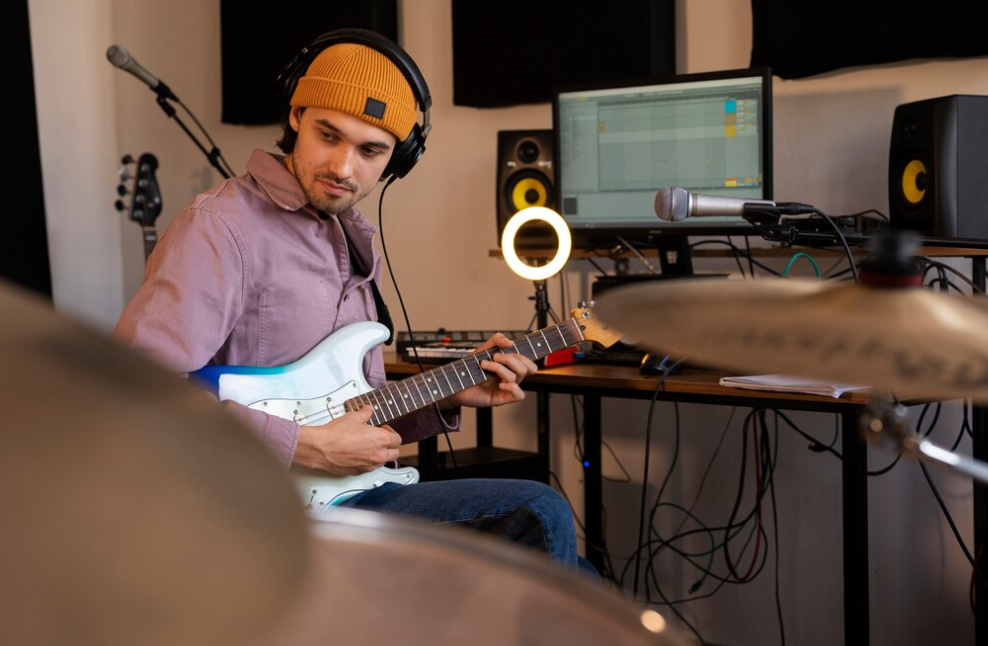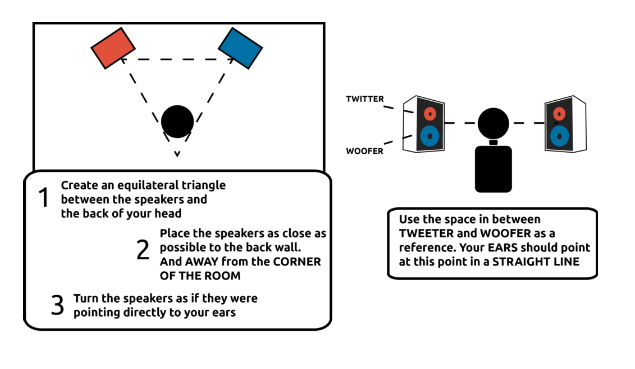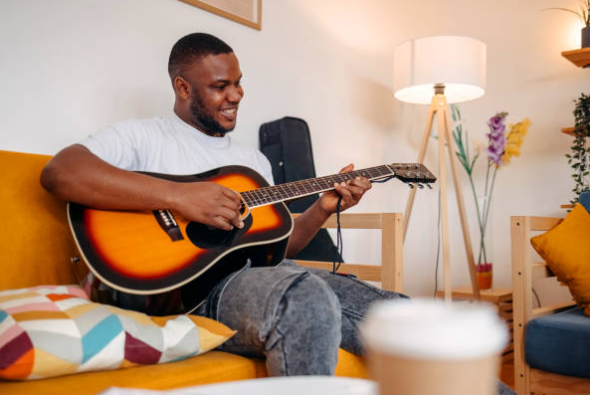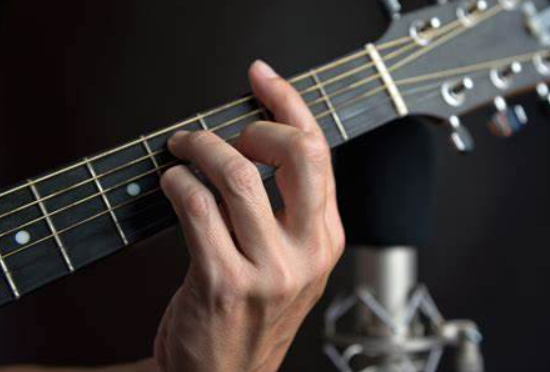Everything You Need To Set Up Your Home Recording Studio

Several decades ago, the idea that you could get professional-quality sound in a home recording studio setup was completely unheard of. Back then, recording equipment cost hundreds of thousands of dollars to buy and to this day, you probably think that way.
Setting up a home recording studio can be exciting, but it also requires careful planning and investment in the right equipment.
Finding the Right Space
Choosing the right room for your studio is crucial. Look for a larger space with walls that are not too close together to avoid sound reflections that can affect the quality of your recordings. Avoid perfectly square or rectangular rooms as they can create reverberation issues. Irregularly shaped rooms can help diffuse reflections and provide a more accurate sound.
It’s important to note that finding a perfect room is unlikely, especially without professional help. Professional studios are designed by experts who charge significant amounts of money. In a home studio, you will always encounter some sound issues. The key to creating a good recording space at home is to plan your room accordingly to minimize these issues.
If you have a square room and cannot make major changes, a helpful video at 4:20 provides information on how to properly configure speakers in such a room. However, it’s recommended to watch the entire video as it contains valuable and practical information.
Basic Home Recording Studio Equipment
After choosing the room to transform, comes the exciting part of setting up your home recording studio. However, this process can be challenging because the professional audio industry is vast, which has its pros and cons.
On the positive side, there is a wide range of high-quality equipment available for you to choose from. On the other hand, it is easy to overspend as a result. So, before starting your shopping journey, it’s important to establish a budget and stick to it. You can create a decent studio for a few hundred dollars or spend thousands – it depends on your preferences.
Regardless of how much you decide to spend, there are several essential pieces of equipment that every home studio needs. Whether you are an aspiring producer or an established professional looking to work from home, the following gear is necessary to achieve the best sound quality for your music.
1. Computer
To start, it is important to have a high-quality computer for your recording studio. The computer will be the main tool for your work and will serve as the central connection for your equipment. It is crucial not to underestimate the importance of a good computer because outdated machines can hinder efficiency.
Digital audio workstations (DAWs) are becoming more demanding in terms of resources. It is recommended to aim for a new computer with decent specifications. While there are no strict guidelines for CPU or RAM, it is advisable to check the requirements of your preferred DAW and go from there.
Fast processors are highly valuable, with a quad-core processor (2.2 GHz or higher) being the minimum requirement. For RAM, 8 GB is the bare minimum, but 16 GB is recommended for recording with multiple tracks. In terms of storage, project files can be quite large, especially with higher bit depths and sample rates. Starting with 500 GB is a good idea, but more is better so please, consider investing in solid-state drives (SSD) if possible, as they offer greater reliability and faster load times.
There is ongoing debate among audio engineers and producers about the advantages of Mac and PC operating systems for music production. Historically, Mac computers were seen as more reliable for this purpose, and many professionals still prefer them. However, the performance and reliability differences between the two systems have become less significant, so choose the operating system that suits you best.
For a home recording studio, it is generally recommended to use a desktop system. These computers are more powerful and easier to upgrade, providing the necessary capabilities for recording. However, laptops can also work well, especially if you need portability. If choosing a laptop, make sure it is a professional-level device with sufficient input/output (I/O) ports to accommodate your equipment.
2. DAW
What is a DAW? A DAW is short for Digital Audio Workstation. It is a software that allows for recording and editing of audio. In the earlier days, DAWs were used for basic edits, but now they are used for every step of the music creation process. This includes recording, editing, mixing, mastering, and printing. There are many options to choose from, with varying prices.
Some computers, like Mac, may come preinstalled with a basic DAW like GarageBand. Professional DAWs are preferred, especially if you plan on collaborating or working in the industry. Examples of professional DAWs are Pro Tools and Logic Pro X.
There are also free DAWs available, but they may have limited functionality. A good DAW can be expensive, but some companies offer subscription plans to make it more affordable for home studio users. Here are some of the best DAWs you can try out:
3. Audio Interface
An audio interface is a device that acts as a middleman in your recording setup. It is necessary for recording live music, such as vocals or guitar, as it converts analog sound waves into a digital signal.
Inside the audio interface, various processes are happening. It has an analog-to-digital converter that converts sound waves into bits that can be manipulated by your digital audio workstation (DAW).
There are many interface options available, most of which connect to your computer through USB or Thunderbolt for convenience. If you want to save money, you can opt for a simple interface with one or two inputs. As your needs grow, you can always upgrade to an interface that can record multiple tracks simultaneously.
When looking for an audio interface, pay attention to the I/O setup. This refers to the inputs and outputs available on the device. Ensure that the interface has enough female XLR ports for connecting microphones and sufficient line-in jacks for electric guitars.
4. MIDI Controller
It stands for Musical Instrument Digital Interface which offers the ability to access a wide range of virtual instruments directly through your computer. In simple terms, MIDI allows you to capture musical information. Various types of messages are recorded, such as turning instruments on or off, pressure sensitivity, aftertouch, and more, to create realistic instrument sounds.
Once this data is collected, you can apply synthesizer tones or instrument samples to it. The end result is a lifelike instrument sound that can be used to record individual instruments or even entire orchestras. This can all be done conveniently through your computer. MIDI controllers come in various forms, but the most versatile option is the MIDI keyboard. MIDI drum pads are also quite popular. Regardless of the specific type, having a MIDI controller is essential for enhancing your recording endeavors.
5. Microphone, Pop Shield, Stand
If you want to record vocals, brass instruments, or guitar amps, you´ll need good microphone equipment. Microphones are devices that convert sound waves into audio signals. These aren´t the same as USB microphones that you plug into your computer. Professional-quality microphones accurately capture sound.
Types of Microphones
Condenser Microphones: These are versatile microphones that can be used for vocals and instruments. However, they require additional power called phantom power. Most modern audio interfaces have built-in phantom power. Condenser microphones are great for singing because they capture the voice and create depth in recordings. They come in two forms: large diaphragm for vocals and small diaphragm for drums.
Dynamic Microphones: These use electromagnetism and do not require phantom power. Dynamic microphones are versatile and can be used for various sounds. They are commonly used by live performers because of their flexibility.
Ribbon Microphones: These aren´t recommended for beginners. They are delicate and have a ribbon made of thin metal that can snap under high sound pressure. Ribbon mics are ideal for soft and detailed sounds, such as acoustic guitar strums.
In addition to the microphone, the mic stand and pop filter are important. The stand helps isolate the microphone to avoid unnecessary vibrations. Pop filters are used to reduce airflow from the vocalist’s mouth and prevent pops and clicks in recordings.
6. Studio Monitors
To record music effectively, it is important to have good studio monitor speakers that allow for clear audio playback. Studio monitors are different from regular speakers because they are active, meaning they are independently powered and provide a flat frequency response across all bands. This is crucial for accurate mixing and recording, as it allows the user to hear the music without any additional coloration. It is recommended to allocate a sufficient budget for a good set of studio monitors and take the time to properly position them in the home studio, as this will greatly impact the overall sound quality.

7. Headphones
Even if you already own studio monitors, it is essential to have a good pair of headphones. Professional-grade headphones can fulfill various purposes. These aren’t only useful for perfecting the mixing of your music, but also necessary for recording. By putting on the headphones, you can listen to the sound being captured by the microphone and ensure that it meets your desired quality. It is a mistake to assume that any ordinary pair of headphones will suffice.
The headphones designed for regular consumer use are specifically tuned to provide a pleasant audio experience. This means that the frequency response is adjusted to make the sound pleasing to the ears, which may involve enhancing the bass and reducing muddiness in the mid-range. While this is great for general listening, it is not suitable for precise and critical listening required for mixing and recording. It is important to remember that studio work demands a flat frequency response, so investing in headphones specifically designed for studio use is necessary.
Open-Back & Closed-Back
When searching for headphones, you will encounter two types: open-back and closed-back headphones.
Open-back headphones are not ideal for studio use because they have tiny holes at the back of the ear cups, allowing outside sounds to enter. While they can be used in the studio if you want to remain aware of your environment, it is crucial to avoid using them while recording.
Those tiny holes can cause sound leakage, which can be captured by your microphone. To ensure proper recording in the recording booth, it is always preferable to use closed-back headphones that do not have any holes.
8. Audio Cables
Don’t forget about the cables! They are essential for connecting your equipment together. When you visit a professional studio, you will realize that they have more cables than necessary. Cables often get damaged, so it is crucial to have a sufficient supply of necessary cables to be prepared for recording at all times. Here are a few cables that you should consider investing in:
- XLR cables for microphones
- TRS cables for instruments
- MIDI cables for controllers
- RCA cables for monitors
- Firewire and USB for computer
9. Acoustic Treatment
Acoustic treatment is a crucial aspect of creating a high-quality home recording studio. It involves using acoustic foam panels designed specifically for controlled spaces like studios. Contrary to popular belief, these panels do not soundproof the room but rather serve to control reverb. They absorb reflections and manipulate vibrations, minimizing the impact of the room on your recordings and mixes.
While they may have some dampening effects and help prevent sound from escaping the room, their main purpose is to create an optimal recording and mixing environment. If you’re looking to save money, you can also consider making your own acoustic treatment using the tips provided in a helpful video.
Your Home Studio is Ready!
Here it is! Creating your own home recording studio may be a bit difficult, but it is definitely doable with some understanding. All you require is the appropriate equipment.
By having these necessary items, you will be prepared to excel in a short period. This gear can enhance the sound quality of your room and provide you with all the necessary tools to record your next successful piece of music. So, why are you hesitating? Go set up your home studio and play music!
Real Brave is a music studio that has a unique learning environment for live virtual lessons so people can learn from home, from any of our 3 locations: Oakland, NJ, Queens, and Manhattan NY. We have highly trained instructors to give you all the music knowledge so, if you´re looking to start your journey in music, a parent looking for the best place to learn an instrument or just looking for a hobby, you are in the right place! If you want more info, please email me at dan@realbraveaudio.com




